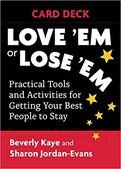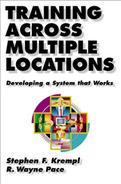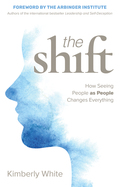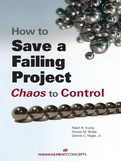2004
Enter Bob Rawlings, the owner of Marsha's local gardening store. In Bob's 30 plus years as a successful sales professional, he experienced the same career frustrations, but found that if he treated his business like his garden, his business grew—and a happier, more relaxed salesman appeared. Bob teaches Marsha the secrets of his sales garden, helping her to recharge her career.
The clever sales garden metaphor will change you the way you think about sales. By adhering to the easy, practical steps outlined in Sprout!, you, too, can beat career blues, increase your sales, and sustain yourself for the long term.
• Packed with useful tips and practical advice that will help salespeople reduce stress and increase satisfaction in their jobs-and make more money too
• Uses an entertaining and unique gardening metaphor that can be applied immediately to any sales situation
• Most books on sales are about a particular technique-this book addresses the "big picture"
Sales has always been a high burnout profession. These days, with the intense focus on quarterly earnings reports, there is more pressure on sales professionals than ever before. The relentless push for immediate results can leave salespeople exhausted, frustrated, and wondering why they ever got themselves into this business. And it can leave sales organizations with a serious turnover problem.
SPROUT! was written by two long-time sales veterans to help their fellow professionals rediscover enthusiasm for their chosen profession and to help sales organizations retain top talent. Vengel and Wright use a page-turning story to outline a new strategy for sales, one that will make salespeople better able to cope with the inevitable ups and downs and take a more effective, long-term approach.
As the book begins, Marsha Molloy has had it. Once a top pharmaceutical sales representative so crackerjack her nickname was Marsha Money, she's been laid low by a tough economy and just plain exhaustion. The once-hungry top producer has seemingly lost her touch and grown indifferent to a sales culture that appears to value faxes, emails, and cell phone chats instead of the relationship building that had been her forte. An avid gardener on a visit to her local nursery, Marsha runs into Bob Rawlings, the store's new owner and an ex-sales professional himself. They begin to chat, and Marsha mentions her career frustrations. Bob replies that he'd had the same problem, but found that the more he began treating his business like his garden, the better his business grew - and a happier, more relaxed salesman appeared. Marsha is intrigued but puzzled - how could sales be like gardening? Bob takes Marsha under his wing and, with the assistance of several other salespeople he's mentored, teaches her the secrets of his sales garden.
By using the authors' sales garden metaphor to change their whole way of thinking about sales, and by adhering to the easy, practical steps outlined in SPROUT! salespeople can beat the career blues, increase their sales, and sustain themselves for the long term.
- Provides practical solutions to the business problem of distributing training to multiple locations
- Introduces a new and practical way to use assessment to create a sustainable training and development function
- Shows how those involved with training and development can make bottom line contributions to the company
- Provides a model for calculating return on investment (ROI) for technology based programs
2001
For everyone who yearns to simplify life, slow down, and get centered, all without compromising their career, Dot Calm offers more than hope-it offers answers. Based on the authors' in-depth interviews and survey results, Dot Calm outlines a wide variety of proven tactics that real people in all walks of life are using to cope with the ubiquitous problems of information, access, and work overload. This book provides an unprecedented chance to leverage the success strategies of people who have managed to sever the "electronic tether" that kept them constantly bound to their jobs.
Dinnocenzo and Swegan show that you don't have to sacrifice productivity or efficiency to have a sane, balanced life. On the contrary-technology can so overwhelm people with data that they have a hard time focusing on those activities that truly matter. Unplugging will actually make you more effective.
- Provides detailed, practical solutions to the problems of information, access, and work overload
- Offers real-life examples of individuals who have managed to reclaim their lives without compromising their careers-and tells how they did it
- Shows organizations alternative approaches to increasing productivity without overloading workers
2018
Seeing people as people is an idea so simple you'll swear you've heard it a million times but so profound you'll never stop learning from it. Kimberly White discovered it in a chain of nursing homes whose leaders, nurses, and housekeepers saw their patients, not as tasks to be ticked off a to-do list, but as valuable human beings.
White helps you to this transformative shift with warm encouragement, insightful guidance, and powerfully moving, true accounts of extraordinary human goodness.
Poor project results are all too common and result in dissatisfied customers, users, and project staff. With countless people, goals, objectives, expectations, budgets, schedules, deliverables, and deadlines to consider, it can be difficult to keep projects in focus and on track. How to Save a Failing Project: Chaos to Control arms project managers with the tools and techniques needed to address these project challenges. The authors provide guidance to develop a project plan, establish a schedule for execution, identify project tracking mechanisms, and implement turnaround methods to avoid failure and regain control.
With this valuable resource you will be able to:
• Identify key factors leading to failure
• Learn how to recover a failing project and minimize future risk
• Better analyze your project by defining proper business objectives and goals
• Gain insight on industry best practices for planning



























